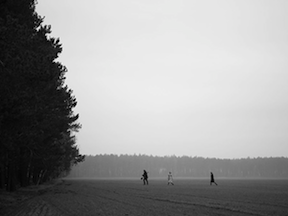IDA and LORE, Small Films with Epic Impact, June 2014
Ida and Lore, contemporary films by young directors about post WWII, (currently in Laemmle theatres and in video release plus On-demand, respectively) uncannily capture World War II from the perspective of its aftermath. Each stark feature resonates and haunts, similar and sure to become classics, like Two Women and Bicycle Thief.
Like the Italian films, both very personal stories reveal family choices and consequences, by way of a journey. Polish Pawel Pawlikowski shares a few days of an aunt and niece in a village that catapults them into a vast and sorrowful emotional history, while Australian Sara Courtland portrays five siblings scratching their way through towering German forests and safety at grandmother’s house, only to find it can be even more dangerous there.
Ida takes place in 1962 Poland, just as the country was developing a new culture and shedding the pall of Stalinist purge politics – if not a much longer history of anti-Semitism. The “cool” jazz band in Ida, (Kristian Eidnes Andersen) in fact, provides the only music in the film.
Pawel introduces us to Anna (Agata Trzebuchowska), a devout young novitiate. The time is late winter, and falling snow adds to the sheltered, calm of the austere convent. Before Anna is allowed to take her vows, the mother Superior sends her for the first time to visit her Aunt Wanda in Lodz to learn her identity.
When we first meet Wanda (Agata Kulesza), she is in a slip with tousled hair and ever-present cigarette in her mouth, moving through what appears to be a hangover haze and one-night stand. A man in the background hastily leaves upon spotting Anna. After bluntly telling Anna that she is Jewish, her name is Ida and that their family perished in the war, Wanda sends Anna on her way with the admonition, “you wouldn’t have wanted to share my life.” Is she a prostitute? That makes sense.
We then see Wanda at work as a judge in a court hearing, commanding and sophisticated in a suit. Afterward we watch her reluctantly seek out Anna at the bus station. She agrees to visit their family village and learn their war history.
Wanda understands that the trip will force her to look at her own past choices. Once a resistance fighter, Wanda became judge of the state during the Soviet regime, so dedicated she earned the reputation of “Red Wanda.” Forcing her way into their ancestral house in the middle of nowhere, Wanda looks the new owner in the eye and glowers, “I can destroy you.” We believe her.
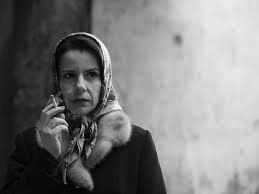
But now the state has no use for resistance fighters or high level political judges. She has the force but only a shrinking shred of power. What Wanda does possess is perspective. She tries to entice Ida to enjoy beautiful clothes, men and music, pointing out that without experiencing them how can Ida really make a choice of celibacy. Wasn’t Jesus Christ was a real man who lived in a real world with emotions and color?
Wanda uncovers the personal, explosive story of what happened to the family, her sister and Ida’s mother, along with her own son. It is a tragic story with guilty parties going unpunished and in retribution for losing family and farm Wanda and Ida receive a few bones they wrap in a scarf.
But the journey provides closure. And it provokes both women to examine their choices in stunning if inevitable ways.
Pawel Pawlikowski’s Ida, is exquisitely shot in black and white and on a square screen. Framing characters on the bottom of the screen compels us share their diminishment. At other times, aunt and niece sharing a moment of intimacy become a lovely photo as in an album portrait. That is, until Wanda disparagingly notes that her brother-in-laws lower social status probably contributed to the family’s demise.
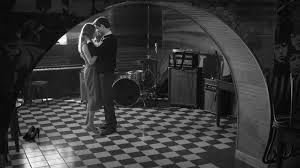
Written by Pawel and Rebecca Lenkiewicz, Ida is only 80 measured, deliberate minutes but Pawel moves us to feel as if we are living it in real time, supported by Production Designer, Marcel Slawinski and cinematographers Ryszard Lenczeweki and Lukasz Zal, and editor Jaroslaw Kaminski. He defines his homeland after living and traveling outside of Poland for many years that seem to have enabled him to gain perspective and empathy for its history.
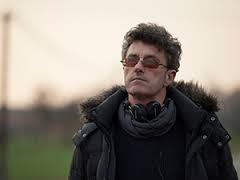
If Ida is a slowly moving, time bomb of a film Lore explodes with the lush color of farmlands and forests in a grotesque version of Little Red Riding Hood. It is the “Sound of Music” imploded as five children without their parents make a daring journey through war torn Germany to what they dream of as safety at grandmother’s house.

Lore shows what happens to a family of sheltered “Aryans” after the victorious Allies take away their SS officer father and mother right after WWII. Eldest teen-age daughter, Lore (Saskia Rosendahl), with her limited experience and once privileged family status, is in charge the trip to Hamburg across 900 kilometers of forest, filled with both sympathetic and antagonistic Germans along with nature’s own terrors.
Coming to the rescue is daring, charismatic Thomas (Kai Malina) , a mysterious young refugee. The numbers on his arm tell the story.
The children love Thomas, but to Lore he is both attractive as a rescuer and an attentive suitor, but repulsive as Jew – shearing her newly discovered feelings in two when faced with trusting someone she has always been taught to hate.
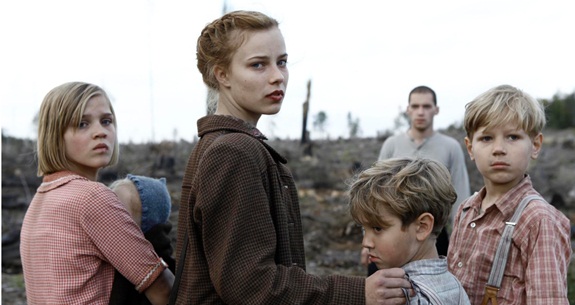
Lore is based on the book of the same name by Rachel Seiffert, with a screenplay written by Robin Mukherjee and director Cate Shortland, edited by Veronica Jenet, ASE and filmed by Adam Arkapaw. The engaging Mika Seidel, Andre Frid and Eva-Maria Hagen portray the beautiful and charming siblings.
Every moment of both films ring true. Take the European forests. My Czech mother could describe them to us so well, but these films are the first to elicit the feeling of them, just as Jerzy Kozynski’s Painted Bird made me understand the narrow and dangerous mindset of the isolated, ignorant peasants she told about from the small villages.
